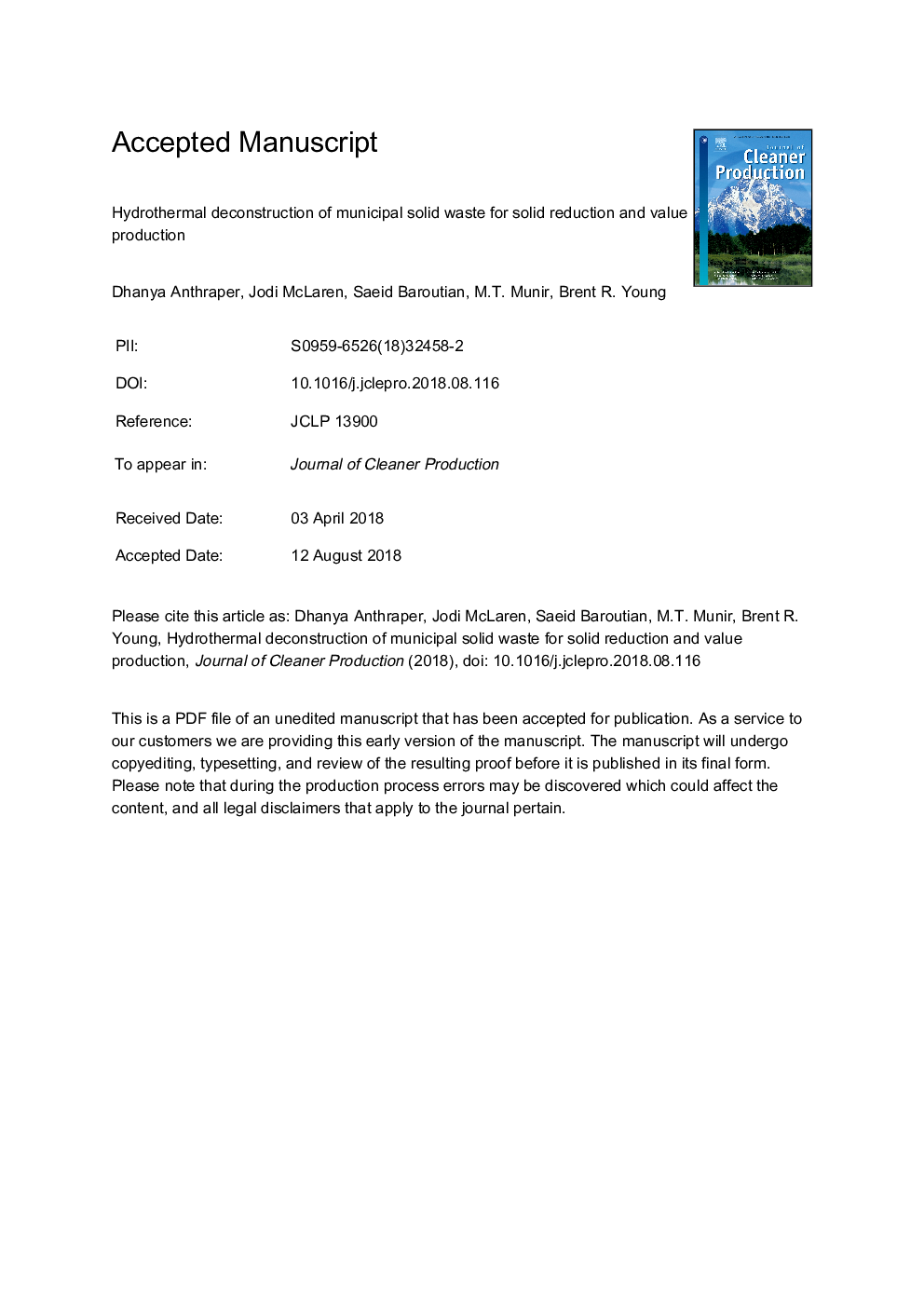| Article ID | Journal | Published Year | Pages | File Type |
|---|---|---|---|---|
| 8092878 | Journal of Cleaner Production | 2018 | 25 Pages |
Abstract
In order to reduce solid content and to recover value from municipal solid waste materials, laboratory-scale batch hydrothermal deconstruction tests were carried out under subcritical wet oxidation conditions. Treatments of the selected solid waste materials (plastics, timber, tyres, cardboards, and sanitary items) were carried out at a temperature range from 240 to 280â¯Â°C with initial pressure of 35â¯bar oxygen. A substantial solid reduction was observed for the wastes through the wet oxidation deconstruction process, which breaks down the physical structure of the waste materials and segregates the solids into useable process outputs, such as acetic acid. At 280â¯Â°C, more than 90% of total suspended solids were successfully reduced and at least 1500â¯mg/L of acetic acid was produced for each individual material. The mixture of materials representing a non-recyclable municipal solid waste stream produced approximately 2930â¯mg/L of acetic acid. Soluble chemical oxygen demand showed different trends for different materials due to competing effects of solubilisation and oxidation. The high concentrations of acetic acid product offer opportunities for recovery and re-use if effectively managed therefore such a process can provide a significant commercial and environmental benefit.
Related Topics
Physical Sciences and Engineering
Energy
Renewable Energy, Sustainability and the Environment
Authors
Dhanya Anthraper, Jodi McLaren, Saeid Baroutian, M.T. Munir, Brent R. Young,
